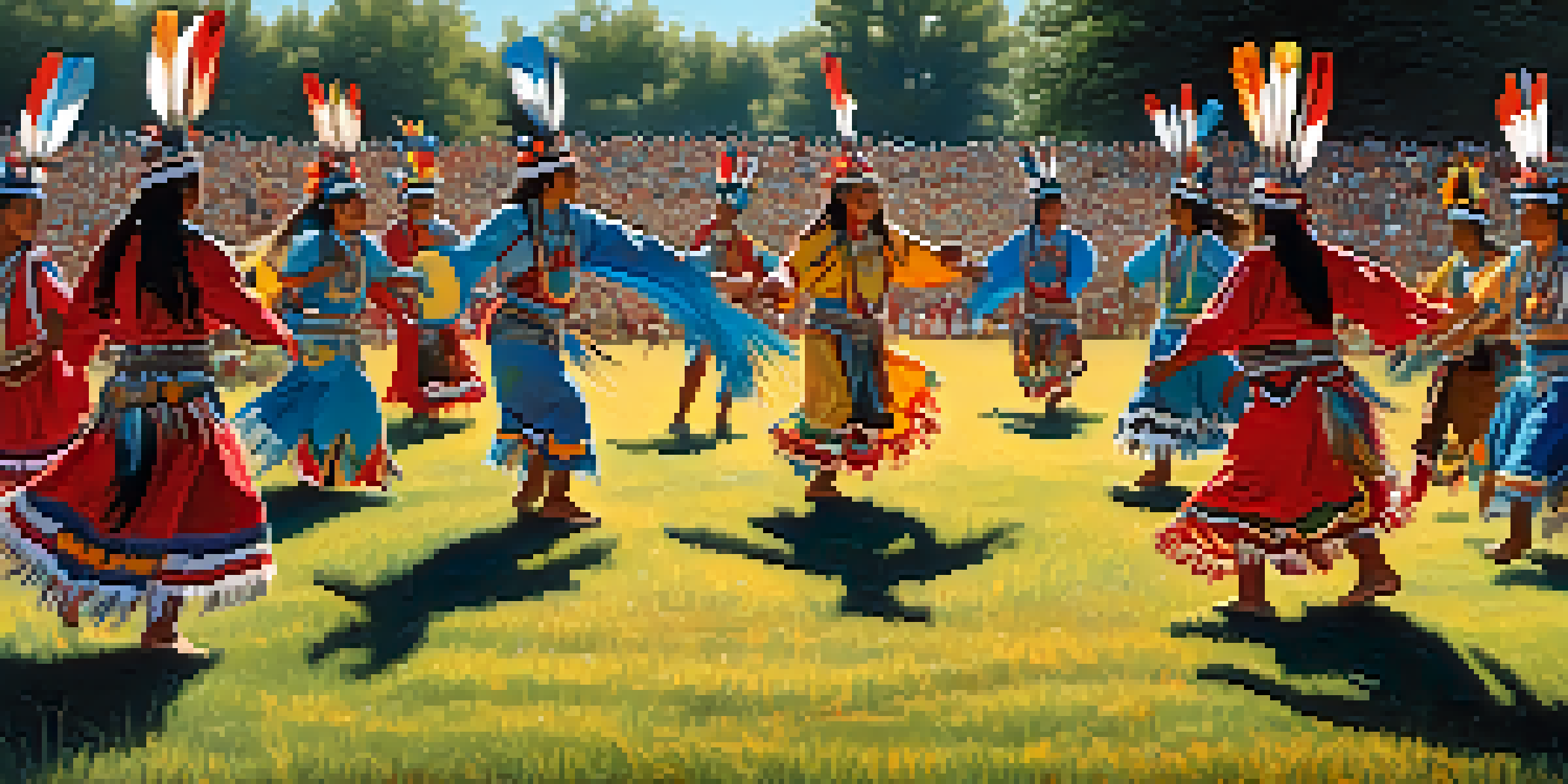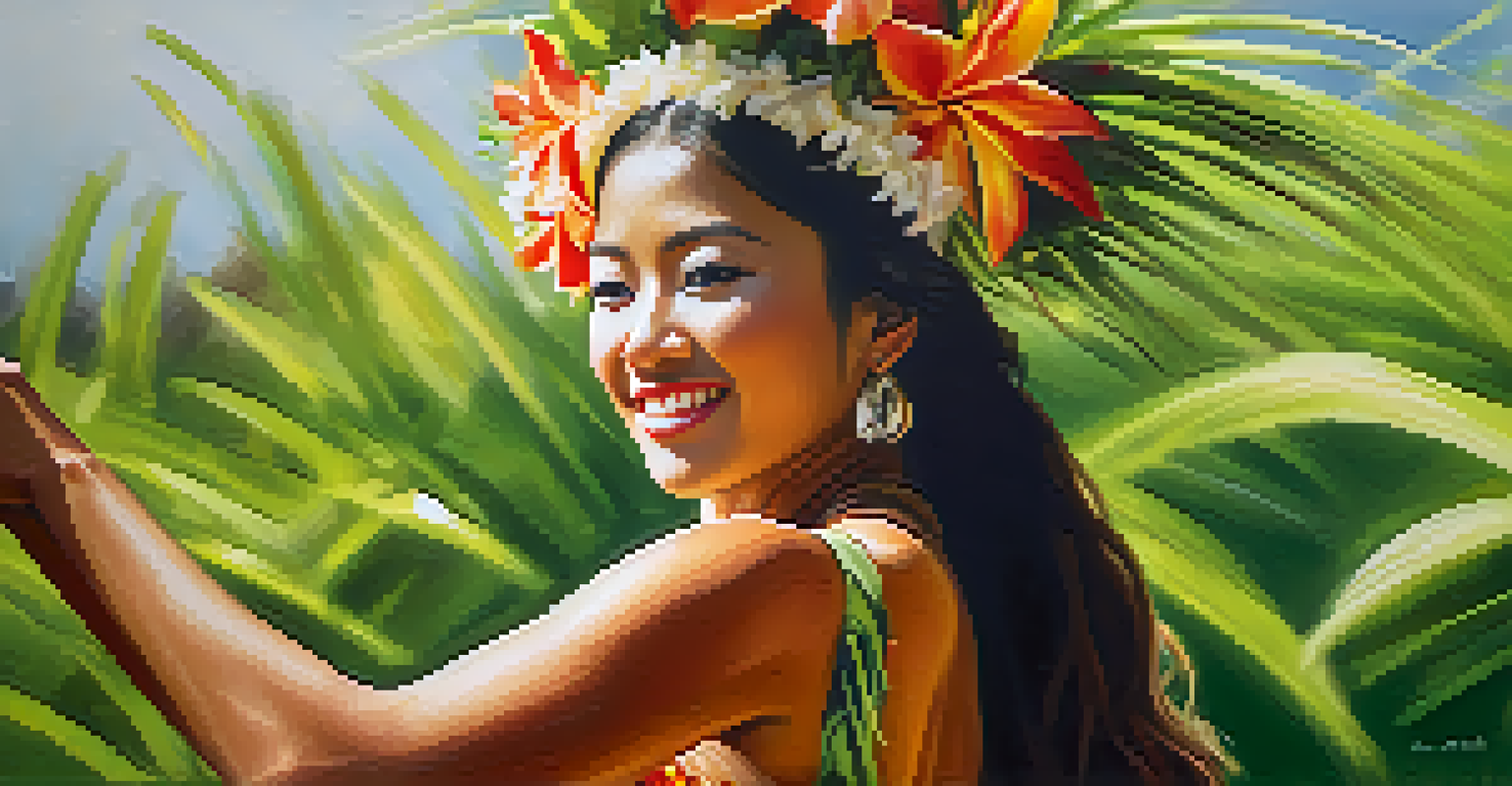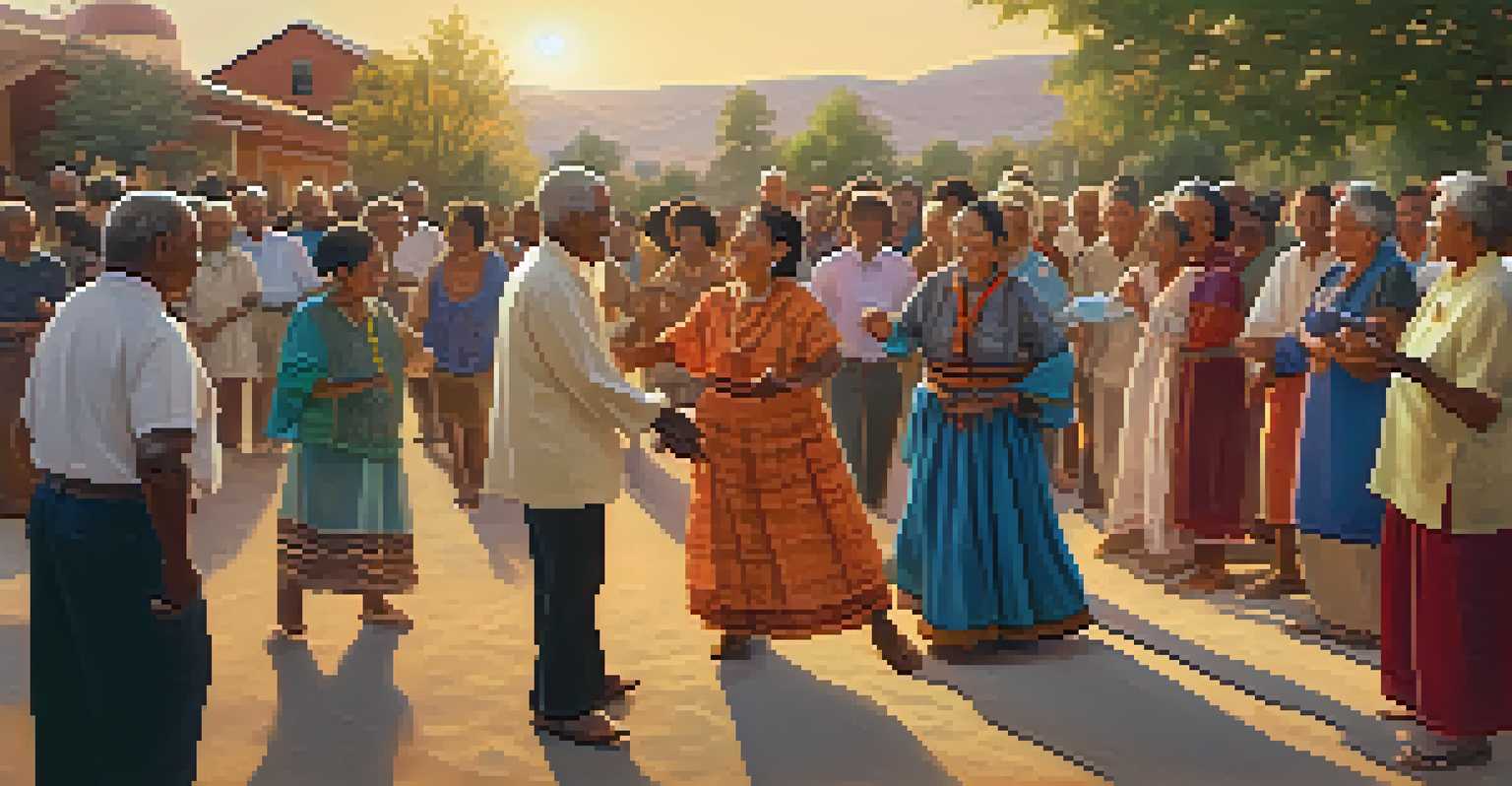Dance Rituals: Preserving Indigenous Cultures Through Movement

Understanding Dance as a Cultural Expression
Dance is more than just movement; it is a powerful form of cultural expression. For many indigenous communities, dance serves as a vital link to their history, traditions, and values. Each step, rhythm, and gesture tells a story that has been passed down through generations, preserving the essence of their identity.
Dance is the hidden language of the soul.
Through dance, indigenous people convey their beliefs, celebrate milestones, and honor their ancestors. It's like a living museum where the art of movement encapsulates their cultural heritage. When participants engage in these rituals, they are not just performing; they are embodying their history and connecting with their roots.
Moreover, dance rituals often incorporate elements of nature, spirituality, and community, making them holistic experiences. This deep connection to the earth and each other fosters a sense of belonging and continuity, reminding us of the importance of preserving these practices for future generations.
The Role of Dance in Storytelling
Storytelling is a cornerstone of indigenous cultures, and dance plays an integral role in this narrative tradition. Each dance is often accompanied by songs and stories that reveal the community's beliefs, values, and history. For instance, the movements may depict a creation myth or a significant historical event.

Consider the powwow dances of North American tribes, which showcase not only beautiful choreography but also stories of bravery, love, and resilience. Through these performances, dancers become living storytellers, conveying messages that resonate with both their community and spectators.
Dance as Cultural Identity
Dance serves as a vital link to indigenous history, traditions, and values, preserving their cultural identity through movement.
This unique form of storytelling through movement fosters a shared understanding and appreciation of indigenous cultures, bridging gaps between generations. It reinforces the idea that these stories are not static but are alive, evolving with each performance, and adapting to contemporary contexts while maintaining their core significance.
Preserving Indigenous Languages Through Dance
Dance rituals often incorporate indigenous languages, serving as a dynamic vehicle for linguistic preservation. As dancers perform, they may recite prayers, songs, or chants in their native tongue, helping keep these languages alive in a world where many are endangered. This is crucial, as language is a key component of cultural identity.
The dance is a poem of which each movement is a word.
For example, in Hawaiian hula, the lyrics of the accompanying chants convey important historical and cultural information about the islands, their people, and their values. By engaging in dance, participants enhance their linguistic skills while simultaneously celebrating their heritage.
This linguistic aspect of dance not only enriches the performance but also strengthens community bonds. When individuals participate in these rituals, they contribute to a collective effort to keep their language thriving, ensuring that their culture continues to resonate with future generations.
Dance as a Tool for Healing and Resilience
Dance rituals also serve as powerful tools for healing within indigenous communities. Many dances are performed during significant life events, such as births, marriages, and funerals, providing emotional support and fostering a sense of unity. This communal aspect of dance helps individuals process grief, celebrate joy, and find strength in shared experiences.
For instance, the healing dances of the Native American Church involve specific movements and songs designed to promote physical and spiritual well-being. Participants often report feeling a deep sense of renewal and connection after engaging in these rituals, highlighting the therapeutic power of dance.
Storytelling Through Movement
Indigenous dance acts as a unique storytelling medium, conveying community beliefs and histories through choreography and song.
Additionally, the resilience demonstrated through these dance practices reflects the strength of indigenous cultures in the face of adversity. By embracing their traditions and using them as tools for healing, communities can rebuild and maintain their identities amid challenges, showcasing the incredible power of movement.
The Impact of Modernization on Dance Rituals
As the world becomes increasingly modernized, indigenous dance rituals face both challenges and opportunities. On one hand, globalization can threaten traditional practices, as younger generations may gravitate toward contemporary forms of entertainment. On the other hand, the fusion of traditional and modern dance styles can breathe new life into these rituals, attracting wider audiences.
For example, some indigenous dancers are incorporating hip-hop elements into traditional movements, creating a unique blend that appeals to younger audiences. This innovation allows for cultural expression while preserving essential elements of their heritage, demonstrating adaptability in the face of change.
However, it is crucial to approach this blending with respect and understanding, ensuring that the core values and stories are not diluted. By finding a balance between tradition and modernity, indigenous communities can continue to celebrate their cultural heritage while engaging new generations in meaningful ways.
Community Involvement and Participation in Dance Rituals
Community involvement is at the heart of indigenous dance rituals, emphasizing the importance of collective participation. These events often bring together people of all ages, fostering a sense of belonging and unity within the community. Whether it’s through dancing, drumming, or simply being an audience member, everyone plays a role in the ritual.
Many indigenous cultures have specific dances that invite community members to participate, regardless of skill level. This inclusivity helps pass down knowledge and traditions, allowing younger generations to learn from their elders while actively engaging in their cultural heritage.
Healing and Resilience in Dance
Dance rituals provide emotional support and healing, fostering unity within communities during significant life events.
Moreover, these communal gatherings create opportunities for cultural exchange and understanding. When outsiders are welcomed to observe or participate in these dances, it opens the door for education and appreciation, reinforcing the idea that dance is a universal language that can connect us all.
The Future of Indigenous Dance Rituals
Looking ahead, the future of indigenous dance rituals is filled with both promise and responsibility. As awareness of cultural preservation grows, there is a renewed interest in supporting and participating in these traditions. This shift can empower indigenous communities to reclaim and revitalize their dance practices, ensuring their survival.
Educational initiatives and cultural organizations are increasingly promoting workshops, festivals, and performances that celebrate indigenous dance. These platforms provide opportunities for cultural exchange, allowing indigenous dancers to share their stories while fostering respect and understanding among diverse audiences.

However, with this growing interest comes the responsibility to honor and respect the cultural significance of these rituals. It is essential to approach indigenous dance with sensitivity, recognizing that these movements are not merely entertainment but are deeply rooted in history, spirituality, and identity. By doing so, we can help ensure that these beautiful traditions continue to thrive for generations to come.